FIFA Embraces web3: what the Avalanche Partnership means for the Future of Global Sports and Blockchain
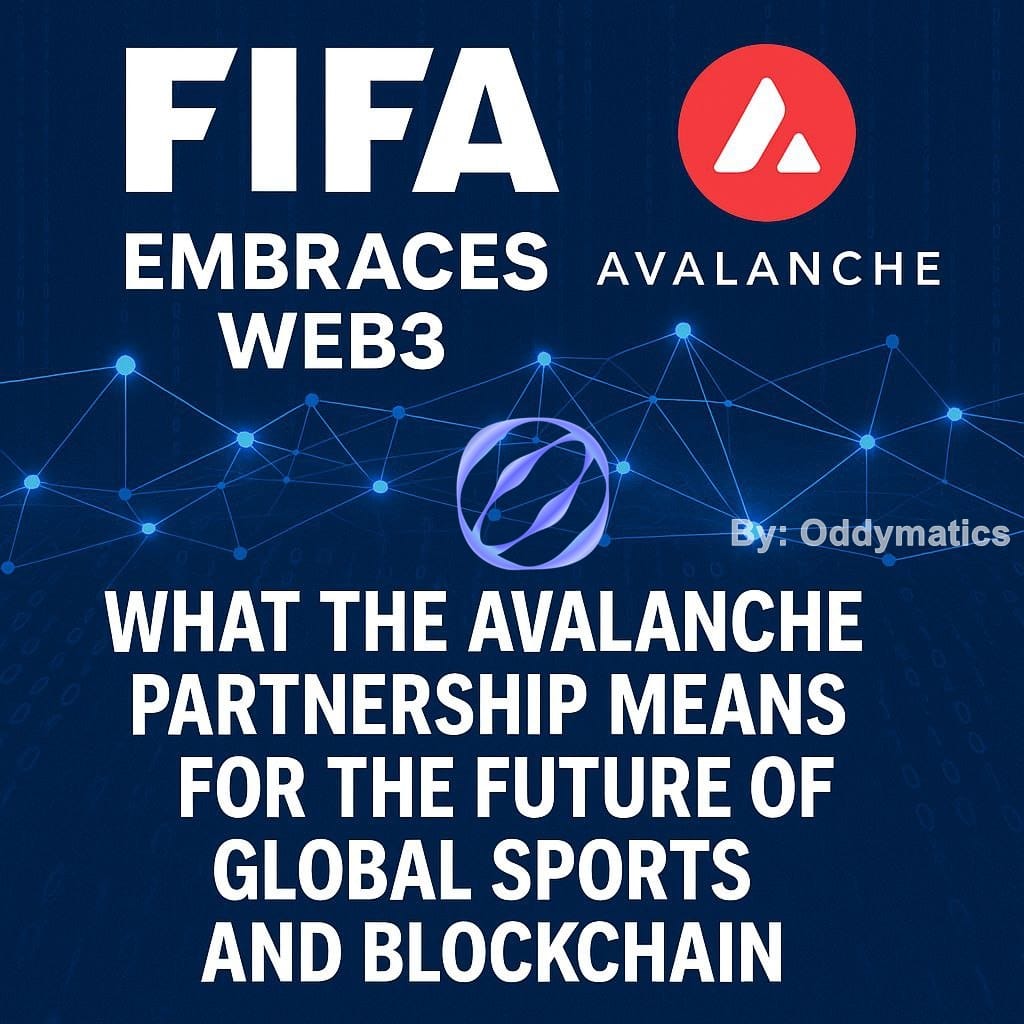
In an era where digital innovation is reshaping every facet of global entertainment, the fusion of blockchain technology with sports has emerged as one of the most promising frontiers. In a landmark move, FIFA the international governing body of football has partnered with Avalanche, a high-performance blockchain platform, to develop a custom blockchain tailored specifically for fan engagement and digital innovation in the world’s most beloved sport. This partnership represents not just a technological evolution, but a cultural and economic shift in how global audiences interact with sports.
The Significance of the FIFA-Avalanche Partnership
FIFA’s partnership with Avalanche isn’t a superficial branding collaboration, it is a strategic leap into the world of Web3, an internet paradigm centered on decentralization, user ownership, and enhanced interactivity. With billions of fans worldwide, FIFA has immense cultural leverage. By integrating blockchain technology into its operations, it is signaling a future where the fan experience is more immersive, personalized, and digitally native.
Avalanche, known for its fast transaction speeds, low fees, and environmentally conscious consensus mechanism, is an ideal candidate to support such a transition. The platform’s architecture is designed to support custom blockchain networks (called subnets), allowing FIFA to develop a dedicated chain optimized for its unique needs. This custom blockchain, dubbed "FIFA Connect+", aims to host a range of Web3 experiences including digital collectibles, fantasy games, NFT marketplaces, and fan reward systems.
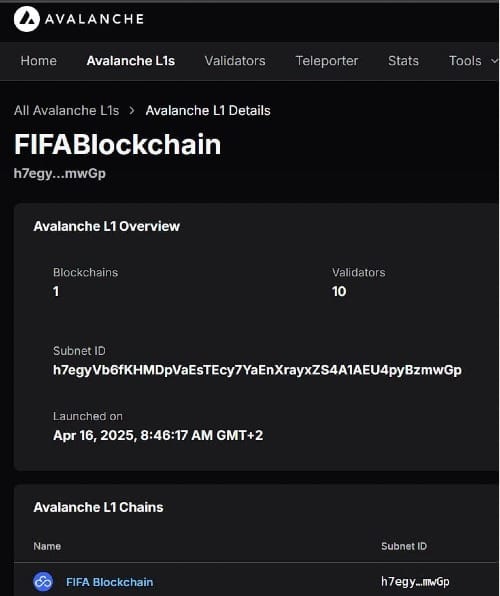
Why Blockchain, and Why Now?
The convergence of blockchain and sports has been gaining momentum over the past few years. Platforms like NBA Top Shot and Sorare have demonstrated the potential of NFTs (non-fungible tokens) in delivering new value to fans while opening up fresh revenue streams for sports organizations. These digital assets enable fans to collect, trade, and showcase moments from games in ways previously unimaginable.
For FIFA, the timing is critical. As traditional viewership models evolve, and as Gen Z and millennial audiences seek more interactive and value-driven content, blockchain provides a direct route to create lasting digital engagements. Moreover, the COVID-19 pandemic highlighted the vulnerabilities of relying solely on physical attendance and traditional media, further catalyzing the push toward digital expansion.
Inside FIFA’s Custom Blockchain on Avalanche
The custom blockchain being developed will not only facilitate the creation and sale of NFTs but will also integrate other interactive features such as:
Fan Tokens and Reward Systems: These could allow fans to earn tokens for participating in FIFA events, voting on certain decisions, or simply supporting their teams. These tokens could then be redeemed for merchandise, exclusive content, or even real-world experiences.
Enhanced Fantasy Leagues: Powered by blockchain smart contracts, fantasy football experiences could be more transparent, secure, and scalable. Real-time performance data, verified ownership of players or teams, and global prize pools could revolutionize the genre.
Ticketing Solutions: Blockchain offers tamper-proof digital ticketing systems that help prevent fraud, ensure transparency in pricing, and allow for easier resale and transfer of tickets all under FIFA’s oversight.
Decentralized Governance: While still speculative, there’s potential for elements of fan governance, where stakeholders (i.e., token holders) could have a say in certain aspects of event planning or digital experiences.
The entire experience is designed to be intuitive for users, many of whom may not be familiar with blockchain. Avalanche’s subnet system allows FIFA to maintain full control over branding, user interface, and fee structures essentially building a Web3 ecosystem without exposing users to the complexity of cryptocurrency or digital wallets.
The Bigger Picture: Sports, Culture, and Web3
FIFA’s adoption of blockchain technology isn't happening in a vacuum. It is part of a broader cultural shift where industries from music to fashion to gaming are embracing Web3 to redefine consumer interaction. In this new paradigm, users are not just passive spectators; they are active participants with verifiable ownership and stake in the ecosystems they love.
For sports, this is a game-changer. Teams and organizations can build deeper relationships with fans, monetize moments that were previously intangible, and reduce dependency on traditional media conglomerates. Players, too, stand to benefit. Digital autographs, exclusive clips, or personal merchandise NFTs could become lucrative personal revenue streams.
Moreover, this shift aligns with the growing emphasis on digital identity. For many younger fans, their digital footprint and the assets they own are very valuable.
How FIFA’s Move Compares to Other Sports Organizations Adopting Web3
FIFA’s blockchain ambitions are bold, but they are not without precedent. Several prominent sports organizations have already ventured into Web3 with varying levels of success.
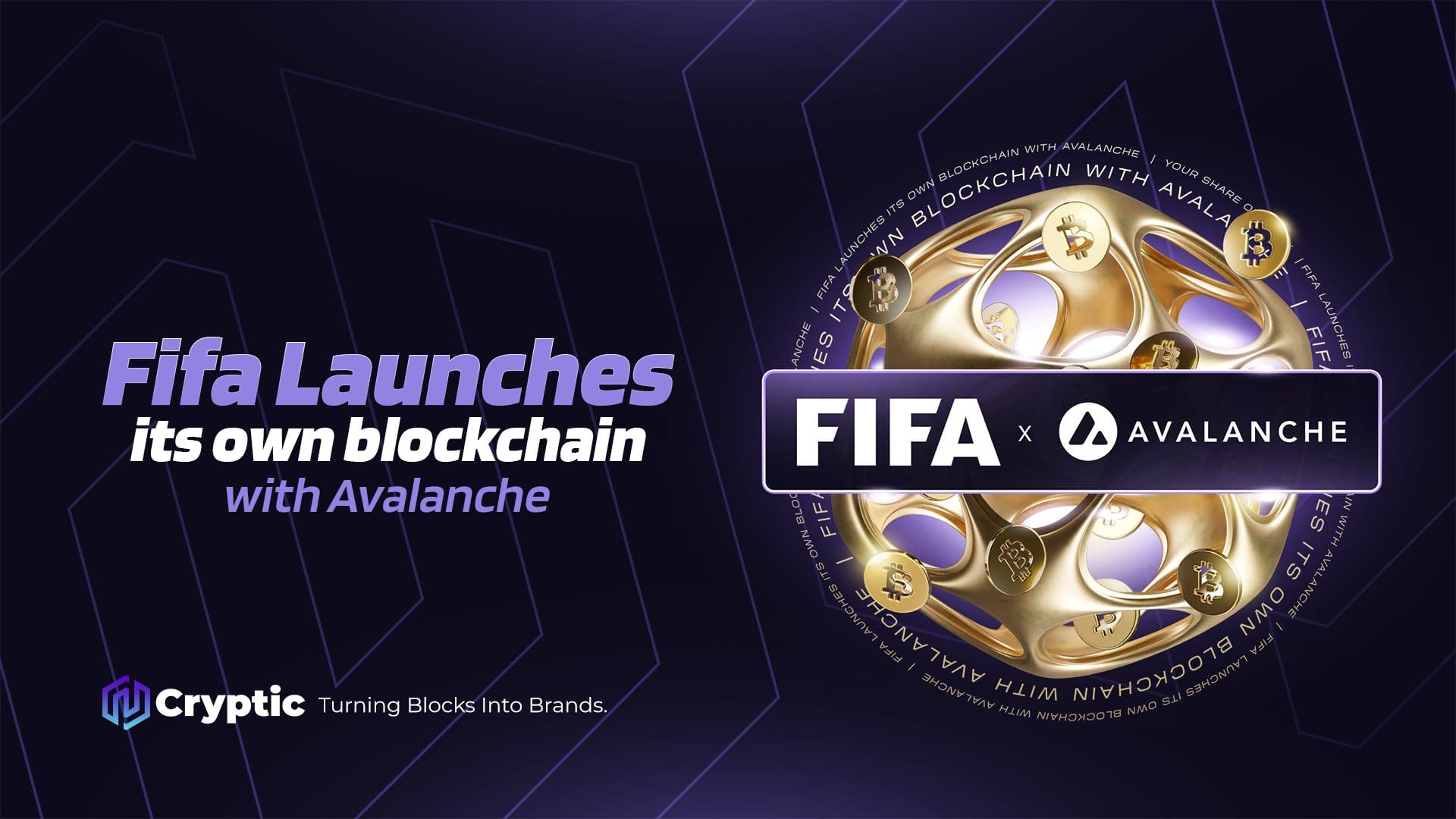
The National Basketball Association (NBA) made early waves with NBA Top Shot, a digital collectible platform built on the Flow blockchain. Fans could buy, sell, and trade officially licensed video highlights as NFTs. The initial hype drove millions in revenue and introduced mainstream sports fans to blockchain for the first time. However, scalability and market saturation posed long-term challenges.
European football clubs like FC Barcelona and Paris Saint-Germain have launched fan tokens through platforms like Socios.com. These tokens allowed fans to vote on decisions like jersey designs and team slogans. While these projects created buzz, critics pointed out their limited utility and reliance on centralized infrastructure, which diluted the core principles of Web3.
FIFA’s approach differs by aiming for true infrastructure ownership. Instead of launching a project on a third-party platform, FIFA is building its own custom blockchain on Avalanche’s subnet architecture. This not only provides more control and scalability, but also enables FIFA to develop a long-term digital strategy independent of other commercial platforms. In short, while others tested the waters, FIFA is diving in with full intent to build an enduring digital foundation.
Why Avalanche and FIFA Are a Strategic Match: Operational Synergies and Technical Strengths
From an operational standpoint, FIFA and Avalanche are aligned in ways that go beyond surface-level compatibility. Let’s break down why Avalanche’s blockchain technology is a strategic match for FIFA’s ambitions.
- Scalability and Speed
FIFA events draw hundreds of millions of viewers in real-time. Any digital system designed for such an audience must be able to handle high transaction throughput with minimal latency. Avalanche excels here. Its unique consensus protocol allows it to process over 4,500 transactions per second (TPS) and achieve sub-second finality, outperforming most Layer-1 chains like Ethereum or Bitcoin.

This level of performance ensures that fans interacting with FIFA’s digital ecosystem whether minting NFTs, redeeming fan rewards, or buying tickets won’t suffer from network congestion or high transaction fees.
- Customizability Through Subnets
Avalanche’s subnet infrastructure allows FIFA to create a dedicated blockchain environment, completely isolated from the main Avalanche network. This subnet can be fine-tuned to FIFA’s specific requirements, including:
Custom tokenomics (e.g., setting transaction fees to zero or pegging them to fiat currencies)
Governance rules tailored to regional compliance
Integration with FIFA’s existing databases and mobile apps
This level of flexibility is rarely available on other blockchain platforms and is crucial for an organization operating in a global, heavily regulated space.
- Environmental Sustainability
One of the key criticisms levied against blockchain technology is its environmental impact. FIFA, as a global organization with sustainability commitments, cannot afford to associate with high-energy-consuming chains. Avalanche uses a proof-of-stake model that is significantly more energy-efficient than proof-of-work systems like Bitcoin.
By partnering with Avalanche, FIFA aligns its digital strategy with its public sustainability goals, minimizing backlash while appealing to eco-conscious stakeholders.
- Interoperability and Developer Support
Avalanche’s architecture is compatible with the Ethereum Virtual Machine (EVM), which means developers can easily port existing Web3 applications to FIFA’s subnet. This opens the door for an expansive ecosystem of third-party developers to build games, collectibles, social features, and more within FIFA’s blockchain. Operationally, this reduces both development time and costs while ensuring a constant pipeline of innovation.
FIFA can also run permissioned and permissionless features side-by-side, enabling secure enterprise-level operations alongside community-driven initiatives.
Conclusion
FIFA’s partnership with Avalanche marks a bold step into the future of global sports, one where Web3 is not a trend, but a foundational layer. By choosing a high-performance, customizable, and eco-friendly blockchain infrastructure, FIFA is setting the stage for a digital revolution that could impact billions of fans around the world.
More than a technical upgrade, this move represents a philosophical shift,one where fans are not just viewers but stakeholders. If executed with vision and responsibility, the FIFA Avalanche collaboration could become a blueprint for how legacy organizations can thrive in the Web3 era, while enriching the global sports experience for generations to come.

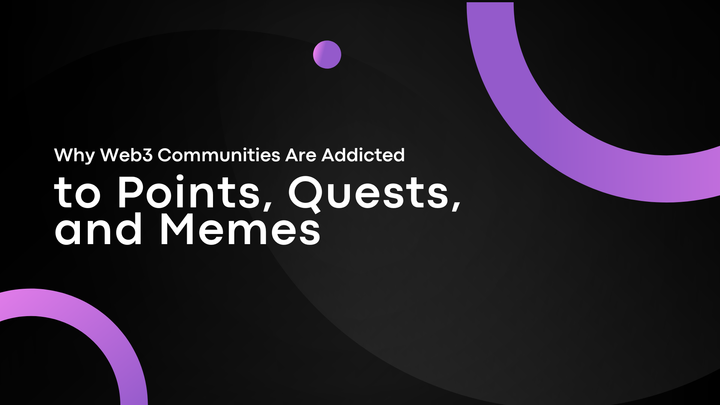
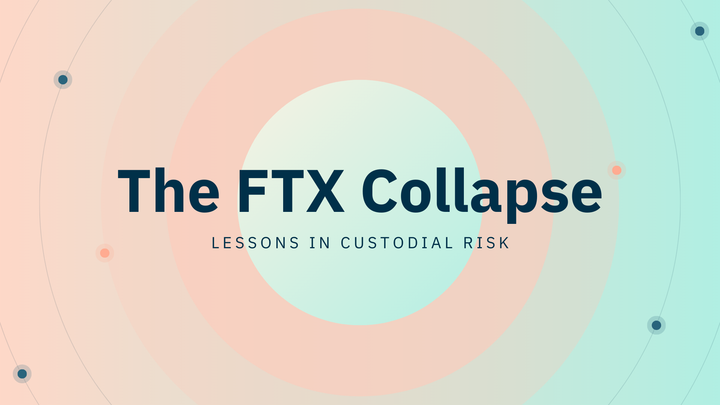
Comments ()